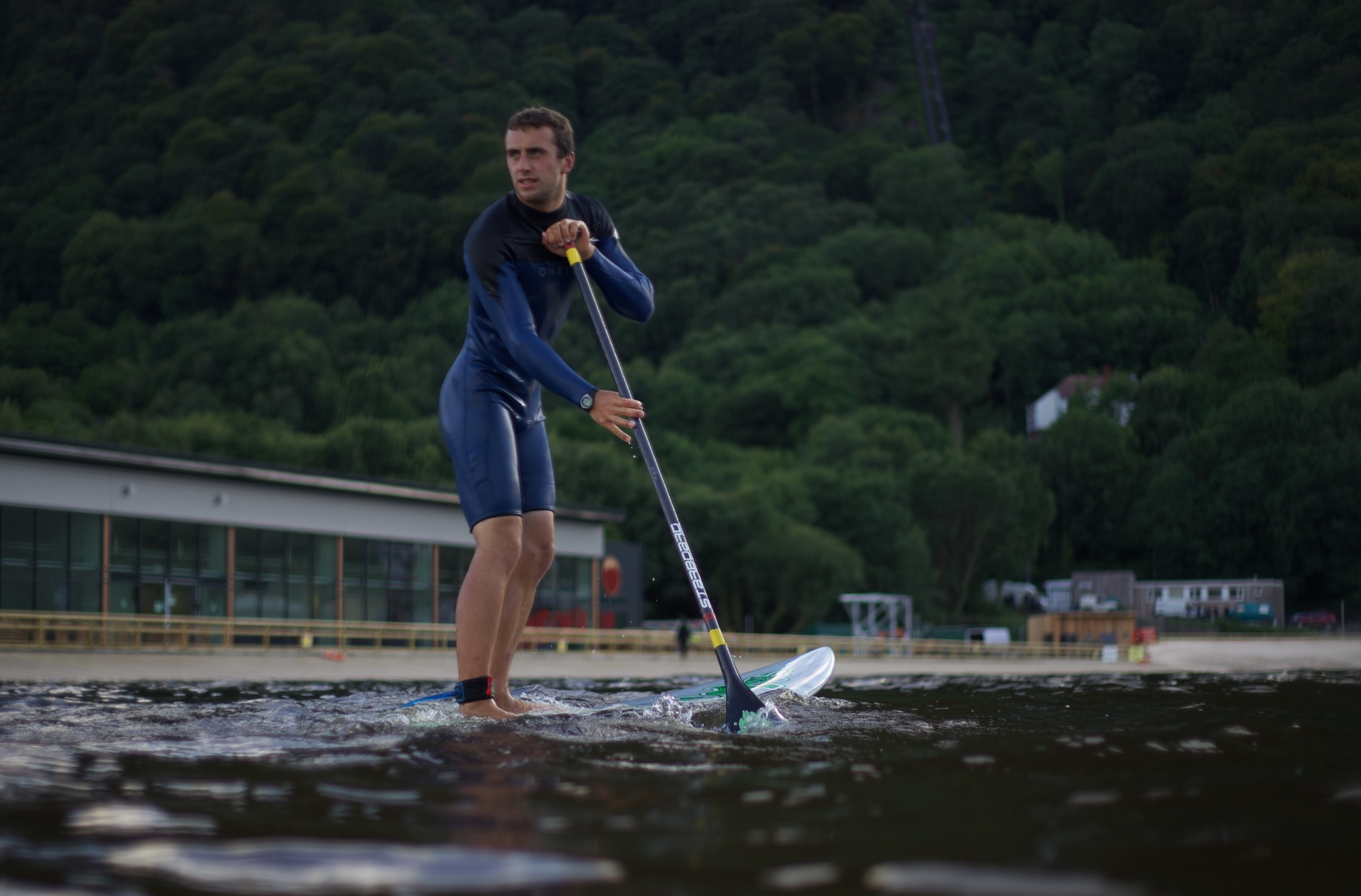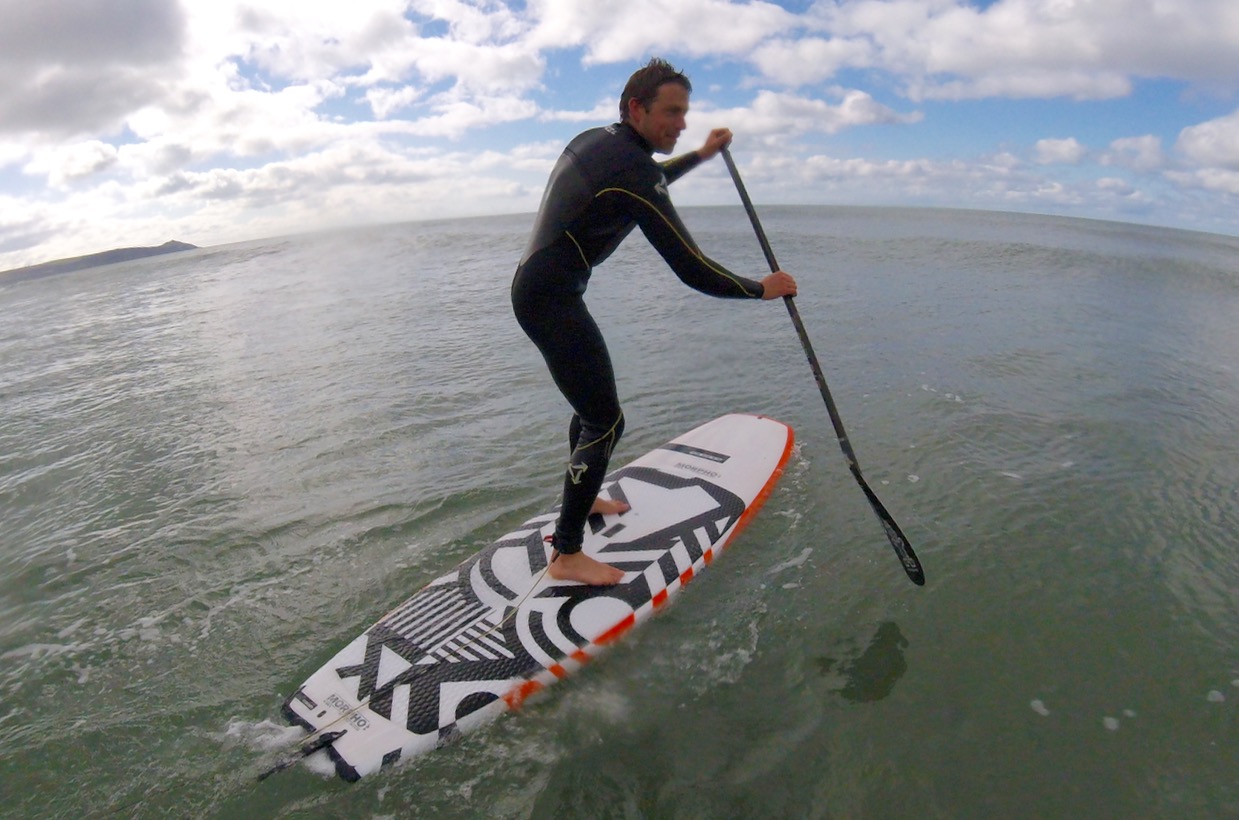
Paddling a smaller board is something all paddlers will most likely want to do at some point in their paddling lives. Whether you want to surf a super small surf SUP, race a narrower race board, or are a heavier rider wanting to paddle a smaller board, the problems and frustrations can be the same. Surf, race or cruising, it’s not all about the size or style of the board. It’s about how unstable it is for you as an individual. Jumping down a size in board can sometimes be a bit of a daunting task and paddling an unstable board can be seen as a real art. But it can be relatively simple with a few top tips (and some practice!) Here are SUPboarders top tips to getting that unstable board feeling stable again…

Keep moving
It might sound obvious to some people, but keeping forward momentum is the most important thing to do when it comes to paddling a more unstable board. By moving through the water you are giving the board lift and keeping the board high up in the water. This makes chop and bumps easier to handle by forcing them down under the nose of the board, making for a smoother ride. Also by keeping your board moving, your paddle will be aiding your stability every time it’s in the water (more on that below).
Use your paddle!
Using your paddle blade to help stabilise you when both stationary and moving on any unstable board is a really great skill to learn. Think of your paddle as a walking stick, or ski pole. The more time your paddle is in contact with the water (on and in the water) the more stable you will feel. Using the back of your paddle blade as a brace is much like using stabilisers on a bike, and can make a massive difference between staying dry on not! You can even incorporate a brace into your paddle stroke. For more information about the brace technique check out the SUPboarder video Surf Brace Technique.
Using your paddle blade to aid your stability when stationary can be very useful, for example when waiting for the next wave to arrive or when on that race start line waiting for the horn to blow.
Paddle in a slight surf stance

By turning your feet so they are slightly off set from the usual parallel stance will help you be able to react and adjust to the boards wobbles. Keeping your feet in normal stance allows you to adjust your balance for side ways motions but is not so easy for forward or backwards motions. By having your feet slightly off parallel you should be able to control all board movements much easier.
How low can you go?
In all sports, lowering your body by bending your knees will make you more stable. In relation to SUP this is because… 1. your centre of gravity is now lower bringing you closer to the board. And 2. having your knees bent makes it easier to adjust to the lumps and bumps on the water. Paddling with your knees slightly bent will also make a massive difference to being able to paddle a smaller board for longer. But it can be a bit of a work out on the quad muscles so be prepared to feel like you’ve done something, especially after the first few tries!
Focus on that horizon

Staring at your feet to make sure they’re in the right place on the board is never a good idea and is a sure way to get you heading in that direction! As soon as you get to your feet bring your head up and look at the horizon. Keeping your head aligned with your shoulders and hips will give you more stability.
Rest when you can
Just standing on a more unstable board can be a workout in itself! So, if you’re not moving just take a break, sit down and save your energy for when you need it e.g the next wave or the start of a race.
Rough stuff
Paddling in rough, choppy conditions is not easy and for most of us not that enjoyable! But if you can find somewhere that is safe to do so, try spending a bit of time paddling your unstable board in the rough stuff. Even if you only just get to your knees or end up falling off every 30secs it will be worth it, because then when you go out in more pleasant conditions your board will feel more stable and you will feel more confident. This is one of the fastest ways of getting to know your board. But it’s important to remember, don’t feel disheartened if you’re struggling to get to your feet in the tough conditions. It’s never easy, especially on a more challenging unstable board. Be prepared to get wet, dress appropriately and give it a go.
Keep them bare
Your toes play an important part in helping you to maintain your balance (on dry land and on a board!). So if it’s not too cold try paddling bare foot. You’ll feel more stable… guaranteed!
Keep fit
The fitter and stronger you are, the easier you’ll find it to paddle an unstable board. It really is an all body workout! Your legs will be working harder to maintain your balance on a more wobbly board than on a more stable one. A lot of the techniques above will help but you’ll still feel it at the end of any unstable board session. Running/cycling/squats etc… will all help you to achieve that goal.

Being able to paddle a more unstable board is always possible, it just takes a bit of time and practice! So before you get on the water and get disheartened with that smaller/narrower board, think about the tips above. You’ll be jumping down a board size in no time!
If you’ve got any good tips you’d like to share, for paddling smaller boards, please leave your comments below…
Generally when we reduce our board size it’s so we can transition to a more Surf oriented design. So if we are struggling to paddle in general or into waves, it is also worth experimenting with a different length paddle shaft, which also decreases our centre of gravity to afford better stability.
One thing that really helped me on super short / low volume boards was to really make sure that I fully bury the paddle blade all the way up to the shaft when either starting off from stationary, paddling to catch the wave or recovery bracing / correcting. Coupled with the full blade bury I would slow down my first couple of strokes from stationary rather than trying to gain momentum too quickly. You get very little (if any) glide from a short board so it’s more about applied power at exactly the correct moment rather than trying to match… Read more »